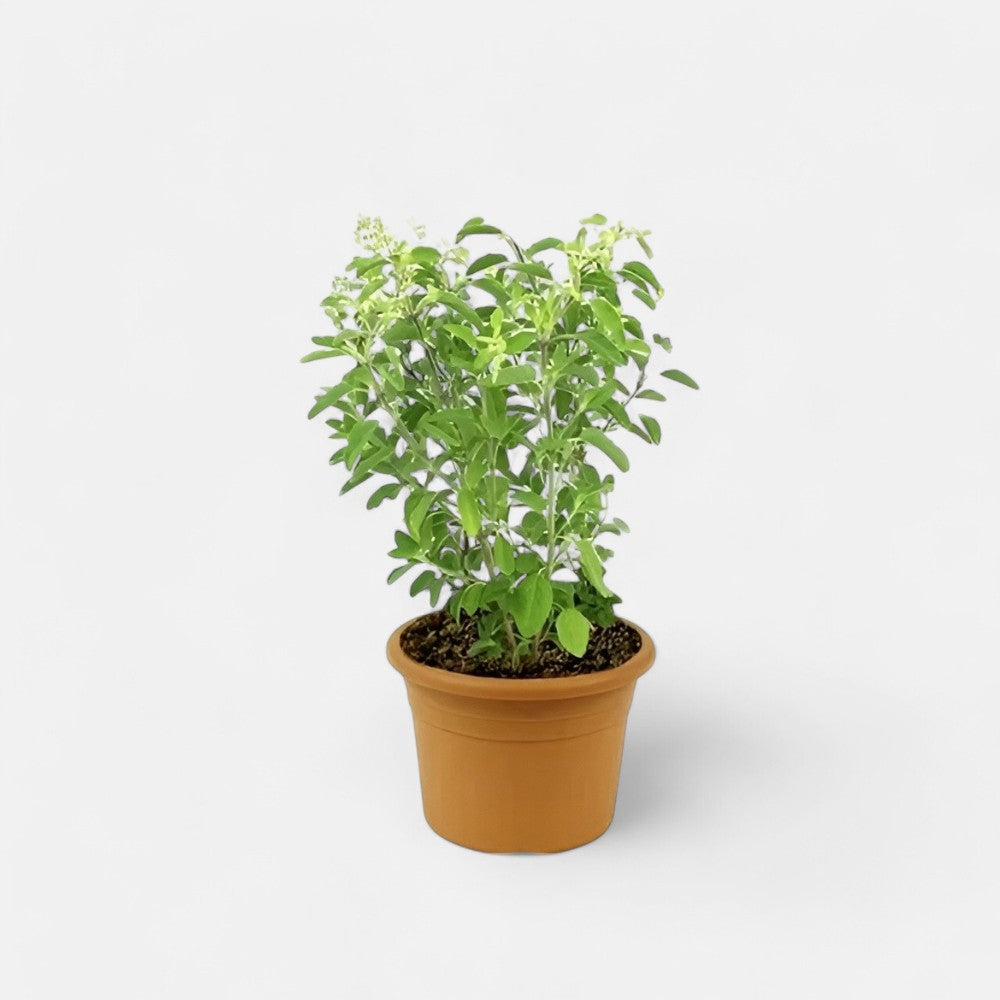

Brief Intro
Ram Tulsi - Rama Tulasi
The Ram Tulsi Plant, also known as Rama Tulasi, is a revered sacred herb with light green leaves and a mild, sweet aroma. This plant is highly cherished in Indian culture for its medicinal properties and spiritual significance.
About Ram Tulsi Plant
Ram Tulsi (Ocimum sanctum) is a lush green variety of Tulsi known for its soothing scent and therapeutic qualities. It is an essential addition to every home garden, symbolizing purity and positivity.
Care Tips for Ram Tulsi Plant
- Light: Prefers bright sunlight for 4-6 hours a day. Partial shade is also suitable.
- Watering: Water regularly but avoid waterlogging. Let the topsoil dry between watering.
- Soil: Thrives in well-draining, fertile soil with a slightly alkaline pH.
- Temperature: Best grown in temperatures between 20-35°C. Protect from frost and extreme cold.
- Fertilizer: Feed with organic compost or balanced fertilizer once a month during its growing season.
Benefits of Ram Tulsi Plant
- Medicinal Value: Known for its anti-inflammatory, antibacterial, and immunity-boosting properties.
- Spiritual Importance: Considered auspicious and often used in Hindu rituals and prayers.
- Aromatic Benefits: Its fragrance has a calming and stress-relieving effect.
- Air Purification: Acts as a natural purifier by absorbing toxins and releasing oxygen.
- Culinary Uses: Adds a subtle flavor to herbal teas and dishes.
Placement Suggestions
- Indoor Spaces: Ideal for windowsills or near entrances to welcome positive vibes.
- Balconies and Terraces: Enhances the aesthetic appeal of outdoor areas with its vibrant green foliage.
- Gardens: Perfect for sacred corners or herb patches.
FAQs:
What is the Return Policy?
This product is Not Returnable. It may be replaced or refunded in case of damage or defective condition on a case to case basis.
How to cancel my order?
Cancellation for Live Plants is allowed before the dispatched. You can request cancellation through Your Orders page or by contacting customer service within that time.
What if i received damage product?
If a product is received in a damaged or defective condition, you need to contact the customer service within 1 days of delivery. Free of cost replacement or refund claim is available to you.



